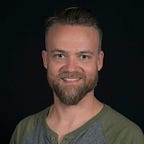Explaining Me
I have been trying to explain my sexuality and gender for all of my life. Not so much to others; with others it’s easier.
I could hide behind my appearance. I could ‘look and act’ heterosexual.
I have always looked like a boy.
Explaining it to myself, though, was much harder. Because I knew I was hiding. I knew I wasn’t what I appeared as when I hid.
I was something else.
Physically, I was attracted to women.
And men.
And trans people.
And anyone else who found themselves outside of the binary.
Emotionally I related to women, I felt an unspeakable sameness when around them. The feeling of being with people that are like you.
Emotionally, I could not generally connect with men.
I didn’t understand them and, worse, they frightened me. The aggression, the confidence, the bravado, it was so foreign and threatening to me. They would fight for fun, they would argue their beliefs with a confidence they felt entitled to.
It was all foreign to me.
I knew I didn’t feel straight, I didn’t feel heterosexual, but I also knew I was drawn to women much more than men; physically and emotionally.
So in the 90s I only knew I wasn’t gay.
I didn’t know there were other options. I just knew what I wasn’t, I had no idea what I was.
In my youth, before I learned of other identifiers and identities within the gender and sexuality spectrum, I identified with lesbianism.
Looking back, this is wrongheaded in so many ways, but I was young and had no other language for it.
I related with lesbians more than anyone. I made friends, I found artists, musicians, etc. And much of the time they would tend to reveal themselves as lesbians after I had become attached. There was something about their communal voice, their perceptions, personalities, that I was drawn to, far before I knew about their sexuality.
From what I could tell from the heterosexual majority, they saw the other sex as a literal “other”, as something different than themselves. For them, it seemed that what was so compelling and attractive about the opposite sex was that exact oppositeness.
Being among heterosexual men, they almost talked about women as another species, as something to be pursued and convinced. A species to be approached with opening lines prepared, false personas perfected, a world of manipulation that was titled seduction.
I could not relate to this. For me, the opposite sex was men. They were the opposite of me, they were the other. What attracted me to women was a sameness, a relatability and sense of safeness and intimacy. There was no pursuit or manipulations, just connections with people I truly related to.
When I was attracted to men, it was entirely physical. And fleeting. I didn’t connect, I didn’t want to be with them for any real period of time. I didn’t want to be in a relationship with them. They were the other.
So what was I? Where did I fit?
Today, in my forties, I say that I’m a non-binary pansexual. This is all true and there is some power and comfort in the titles, if for no other reason that the titles exist which, in turn, means I am not alone.
But I still look like a straight man. I am still called “he” by default. I am still grouped into the boy group when social dictates take over.
It feels like a betrayal. Like I’m lying and tricking everyone. My truth, even when I’m not hiding it, is obscured.
So even now, in my middle age, I feel outside and unsure. I still try to explain my sexuality and gender to myself. Mostly, though, I now ask myself if I’m doing it correctly; if I’m being true and honest with myself and others. Should I be more vocal, should I be more visible? Or would that be a step towards the other side of the equilibrium, still drifting away from myself?
I don’t have the answers. I don’t have the full explanation. I am just trying everyday to be the honest version of me.
I know this much to be true:
I am not straight.
I am not a man.
I am me.
And that is good enough. It has to be.
